
‘In the immediate aftermath of Pier Paolo Pasolini’s murder on November 2, 1975, the Italian press published articles comparing the poet, novelist, filmmaker, and polemicist with a whole “canon of contrarian prophets, talismans and poètes maudits,” according to the literary scholar Robert Gordon, who compiled the list: St. Augustine, Gabriele D’Annunzio, Jean Genet, Federico García Lorca, Cesare Pavese, Arthur Rimbaud, Girolamo Savonarola, Socrates, François Villon, Elio Vittorini, and even the archeologist Johann Joachim Winckelmann, as well as Ariel, Midas, Narcissus, Don Quixote, and Jesus. Nearly all those associations have some plausibility, but at least in a certain mood, I might lean toward Savonarola, the 15th century friar who became a populist tribune and scourge of religious and secular powers before being burned at the stake. If Pasolini seemed to profane everything, it was because he wanted everything to be sacred.
‘Born in 1922 in Bologna, Pasolini spent part of his childhood in his mother’s hometown in the impoverished northeastern province of Friuli, not far from the border with what is today Slovenia. Back in Bologna for university, he began writing poetry in Friulian, though he did not know the language well. Meanwhile, his political loyalties were shifting from Italy’s fascism of his childhood to the left. In Friuli after World War II, he declared his support for the Italian Communist Party. In 1949, charged with sexual misconduct with several young men, he lost his job as a secondary school teacher and was expelled from the party.
‘In 1950, Pasolini moved with his mother to a working-class neighborhood in Rome, finding work in the city’s Cinecittà film studio. In these early Rome years, he made his name as a prodigious member of the literary intelligentsia. His poetry was beginning to be published regularly, he cofounded one of Italy’s leading literary magazines, and he started writing novels, beginning with Ragazzi di Vita (1955), which has been published in English under several titles, most recently in 2016 as The Street Kids. But that anodyne rendering of the title hardly captures the implications of vita in this context, comparable to American street jargon in which “the life” means criminal life; maybe Boys in the Life would have been a more accurate rendering. In any case, Pasolini’s fascination with—and deep affection for—the petty thieves and hustlers of the Roman suburbs he lived in had already established itself. As did his love for dialect: The Italian editions came with a glossary for readers unacquainted with the often obscene Roman slang.
‘In the following decade, Pasolini—having collaborated on some scripts for Federico Fellini—began making films of his own, starting with Accattone (1961), a story of the Roman lumpenproletariat not unlike those of his novels. Accattone takes the Italian neorealist tradition to an extreme and transforms it into something far darker and more pessimistic. Technically, the film was striking for a visual bluntness or monumentality reminiscent of early Renaissance painting. Bernardo Bertolucci, who served as Pasolini’s assistant director, recalled for the Italian newspaper La Repubblica, “It was…like witnessing the invention of a new language. And he never spoke of cinema, only of drawings and paintings, altarpieces.” A new study of Pasolini—Against the Avant-Garde: Pier Paolo Pasolini, Contemporary Art, and Neocapitalism (University of Chicago Press) by Ara H. Merjian, an art historian and Italianist at New York University—takes painting, which Pasolini practiced fitfully but whose history he studied passionately, as a key to understanding his work as a whole. As Pasolini remarked, “My cinematic taste does not have its origins in cinema but in the figurative. That which I carry in my head as vision, as a visual field, are the frescoes of Masaccio and Giotto.”
‘Not surprisingly, given this heritage, Pasolini’s films would draw on themes drawn from literature, myth, and religion, perhaps more suited to his hieratic sense of style—The Gospel According to St. Matthew (1966), Oedipus Rex (1967)—or would treat contemporary life in an allegorical manner, as in Teorema (1968). Meanwhile, having switched from Friulian to standard Italian, he took on the role of civil poet, commenting on contemporary events to express, as his friend the novelist Alberto Moravia put it, “a lament for the devastated, disheartened, prostrated homeland, and nostalgia for the rural culture,” which he remembered from his childhood and from which the urban proletariat of Rome had only just been expelled, and penning innumerable reviews, essays, and polemics that earned him enemies across the political spectrum, not to mention endless attempts at censorship and legal prosecution. He had fervent admirers too, of course, whom he was always willing to wrongfoot, such as when, amid the uprisings of 1968, he stopped to point to the police as “sons of the poor” and the protesters as bourgeois. Although the same poem clearly specifies, “We are obviously in agreement against the police as an institution,” he was taken by many as supporting them rather than clarifying his thought that students with no ties to the working class were in no position to make a revolution.
‘For a while in the early 1970s, Pasolini’s films—his “Trilogy of Life” (1971–74)—seemed to suggest a renewed belief that some eternal life force, incarnated in the rowdy impudence of the lower classes of all times and places, was irrepressible. But then his vision grew darker again. He seemed to see the multiplicity of life and language being stamped out by the monoculture of bourgeois consumerism, which he saw as a new and more powerful form of fascism, “a ‘total’ form of fascism” that “has also culturally homologated Italy” and therefore amounted to “a real and true anthropological catastrophe.”
‘The line between polemicist and curmudgeon blurred in the last years of his life as he penned screeds on the stupefying power of television, long hair (no longer a sign of leftism), and sacrilegious ads for blue jeans. His 1975 film Salò, or the 120 Days of Sodom, represented this state of affairs under the guise of the rump state of Mussolini’s Italy toward the end of World War II, in which a group of rich and powerful men retreat to a castle where they subject a group of young men and women to unspeakable abuse and torture—a sort of hymn to the death drive and one of the most difficult films to watch in the history of cinema. It premiered three weeks after its maker’s still unsolved murder.
As Merjian points out, Pasolini’s death gave rise to his myth. Both “in the popular imagination and the gloss of countless pundits alike…Pasolini had willed his own death, even sought it out.” Those who believed this forgot that he had not long before declared of his time that “the more I am detached from it, the more I agree only stoically to live in it.” And fantasies of a self-willed death, undoubtedly stoked by the grimness of his final film, were not limited to Italy.
‘Pasolini’s death was no fandango. On the beach at Ostia, near the ancient port of Rome, he was beaten and then run over with his own car. The culprit was supposed to be a young man Pasolini had picked up for sex. Despite a confession, many found it hard to believe the story of cruising gone wrong. Rumors suggested an assassination. Why? “Because he was homosexual, communist, and expressed himself openly against the bourgeoisie, government, Christian Democracy, fascists, judges, and police,” as the Italian collective Wu Ming recently put it. The supposed murderer later retracted his confession, and the case was never solved to anyone’s satisfaction. Pasolini was a martyr, but to what cause?
‘In Italy, Pasolini’s poetry is part of the 20th century canon. Books like Le Ceneri di Gramsci (The Ashes of Gramsci, 1957) and Poesia in Forma di Rosa (Poem in the Form of a Rose, 1964) are unavoidable reference points. Their very titles possess an aura. What made his poetry so urgent? His friend and sometime antagonist Franco Fortini—another great poet-critic—put it beautifully: “Where almost all the poets who were his contemporaries or immediate precursors gave themselves a way out, a path to salvation by way of discretion, silence, or the so-called ‘decency’ that Montale spoke of, he recognized the moral necessity of indecency, of ‘giving evidence of the scandal,’ of the triumph of shame and excess.” If anything, this moral tropism toward scandal and excess becomes even more evident in his films, in which, as Merjian says, “Pasolini pursued what he called a ‘technical sacrality’ in frank emulation of Renaissance panels and Romanesque sculpture.” It was in religious art that he discovered the possibility of a gaze that would not flinch from even the most abject sight.
‘Recently, despite the difficulty of encompassing Pasolini’s manifold oeuvre in poetry, fiction, essays, films, and even painting, the artist seems to have been reemerging from behind the myth. For fellow artists, he’s become a beacon. The normally ultra-sensationalistic filmmaker Abel Ferrara devoted one of his best (and most measured) films—shown at the Venice Film Festival in 2014 but unreleased in the United States until 2019—to a chronicle of Pasolini’s last days, played with characteristic subtlety by Willem Dafoe. As A.O. Scott observed in The New York Times, Ferrara’s film “is less concerned with the realistic reconstruction of the past than with communicating a mood in the present.”
Toward the end of his book, Merjian supplies a list of contemporary artists whose work has explicitly cited Pasolini. The necessarily incomplete catalog nonetheless includes some 80 names, grouped by art forms ranging from painting and photography to music and experimental novels and, of course, video and film. Some of the categorizations seem odd. The Italian conceptual artist Giulio Paolini is listed among those who have cited Pasolini in the medium of theater design, and the great Soviet director Sergei Parajanov (who, like Pasolini, paid the price for his sexual nonconformity) is listed for works on paper. I could add other names to Merjian’s list, such as the African American artist Glenn Ligon (his neon sculpture Notes for a Poem on the Third World [chapter one], 2018), the Moroccan French visual artist Bouchra Khalili (her video The Tempest Society, 2017), and the Albanian Italian video artist Adrian Paci, who in 2005 named an exhibition in Zurich “Secondo Pasolini” (“According to Pasolini”). As Merjian remarks, “One is hard pressed to think of a twentieth-century figure—whether poet, artist, or director—who has galvanized a comparable range of artists in such diverse media and over successive generations.” He’s only right, I suppose, if one adds the disclaimer “except for Picasso,” but to put the two men’s names together that way only attests to the protean protean nature of Pasolini’s cultural impact. …
‘Comizi d’Amore (1963) starts with a gaggle of kids in Palermo being asked the obvious question, “Where do babies come from?” The stork brings them, or maybe a midwife. Next Pasolini meets with Alberto Moravia and the psychoanalyst Cesare Musatti: Is this series of interviews worth undertaking? Sure, says, Moravia, because no one talks about these things in Italy even privately, let alone on film. But Musatti warns, “People will either not answer or lie.” And a bit later on, a young man in a craftsman’s shop in Florence admits that he finds the whole topic of sex sad rather than exciting. A soldier believes that society pushes men to play the Don Juan or else be considered a failure, but his buddies disagree; they feel they are too short or don’t have the looks to play that game. A peasant father in Emilia Romagna, asked if men and women should be equal or if women should be inferior, replies, “A little inferior, but not a wide gap.” His daughter, smiling, disagrees. (Later, a woman sunning herself on the Lido in Venice allows, “We’d like to be superior, but sometimes it’s convenient to feel inferior.”)
‘We also meet university students, a pro soccer team, female factory workers, sex workers, and notably, the elderly poet Giuseppe Ungaretti, who, though sitting on a beach chair, is dressed in a suit and tie. Since everyone is different, he says, “all men are, in their own way, abnormal. All men are, in a way, in contrast with nature.” Asked to be more specific about his transgressions of norms, Ungaretti (who seems utterly embarrassed by the whole conversation) tells Pasolini, “I break all laws by writing poetry.” I couldn’t help thinking that Pasolini must have silently considered his elder’s response evasive—but that the response might have corresponded with Pasolini’s conception of his own role.
‘In any case, Pasolini finds an absolute difference between the north of Italy, “modern but…confused,” and the south, which with its “poor yet real population” maintains the cruel clarity of ancient ways, and concludes that, as articulated “from the lower classes and the deepest instincts,” “certain impelling desires” are in conflict with “a modern and democratic law”—a situation that is met only “with disarming superficiality or hopeless confusion.” This is, of course, nothing more than a local variant on what Sigmund Freud much earlier diagnosed as “das Unbehagen in der Kultur,” that is, an inherent discomfort or unease with civilized life. (The title of his book by that name is ordinarily mistranslated as Civilization and Its Discontents.)
‘If Pasolini attempts to be almost encyclopedic in encompassing all strata of Italian society, Hayes’s Ricerche, less than half the length of its model, concentrates on a single place, a single age group. Her interviewees were all students at Mount Holyoke College in Massachusetts, one of the last remaining US all-women colleges—which today means that it has to accommodate the increasing porosity of gender identities. As Hayes points out, “The interview unfolds on camera in such a way that you’re not entirely sure how many people are being interviewed as interviewees slowly add in as the camera, following the interviewer, shifts across the group left to right,” which is to say, while her sampling of subjects is very narrow compared with Pasolini’s, its precise limits are ambiguous. The interviewees are a far more diverse group than Pasolini could have dreamed of encountering in the Italy of six decades ago—white, Black, Native American, Latinx, South Asian, East Asian. Their relationship to the category of women is far more varied than could ever have been articulated in Pasolini’s Italy, too, since the group includes gender-fluid individuals as well as trans men and cis women. And while all of Pasolini’s interlocutors were marked, implicitly or explicitly, by the country’s dominant Catholicism (though Moravia’s Judaic roots go unmentioned), the Holyoke students’ religious upbringing and commitments are varied. This is as much of a conclusion as they can reach: “We are talking about different ‘wes.’”
‘Would Pasolini, if he had lived into his 90s, have approved of Ricerche? Permit me to doubt it and not only because his unqualified agreement with anything was so rare. Savonarola wouldn’t have liked it, either. Pasolini might well have derided the diversity of the Mount Holyoke students as an entirely bourgeois diversity, another example of that assimilation of everything to a dominant culture, a dominant language, a consumerist and mass-marketed bazaar of fungible identities “obtained by the imposition of a form of hedonism and joie de vivre,” as he believed.
‘By now, he easily might have become not just a contrarian but an out-and-out reactionary. Merjian makes clear—starting with his title, Against the Avant-Garde—that although today we might like to see Pasolini as a vanguard artist, he came to reject abstract and Pop art, electronic and aleatory music, the literary experiments of many Italian poets and writers of the 1960s, and the anti-narrative films of Michelangelo Antonioni as much as the abstract “cinema of lyric poetry obtained through editing and the intensification of technique.” All of these he saw, not without reason, as toothless attempts to “deride institutions without eating into them.” Many of the back-and-forth polemics that Merjian chronicles among Pasolini and his contemporaries now seem to be of essentially antiquarian interest, although their ferocity might give pause to those who today lament such vehement and ad hominem public disputes as evidence of a newfangled “cancel culture.” What counts is the consistency with which, in what Merjian calls Pasolini’s “all-out war against the present,” he found his fellow writers and artists all too timely in their interventions.
‘As for what Pasolini would think of his artistic beatification in a world that has become, if anything, even more homogenous in its colonization by neoliberalism than the one he decried? He might not have appreciated the 80 or so homages that Merjian notes. I suspect Pasolini would have quoted one of the verse passages of his 1968 novel Teorema:
But begin to understand immediately
that the poets and painters old or dead
in spite of the halo of a heroic air you give them
are useless to you, teach you nothing.
‘But if Pasolini’s great lesson was his pessimism, our task is to learn when to apply it and when it might do us more harm than good. The young people Hayes interviewed gave me hope. And for that very reason, I wonder whether Pasolini was, after all, the right model for her work. Or perhaps it’s that she understands him better than he understood himself when, finally—but “finally” only because of a contingent act of violence he never willed—he slid from pessimism to despair.’ — Barry Schwabsky
___
Stills

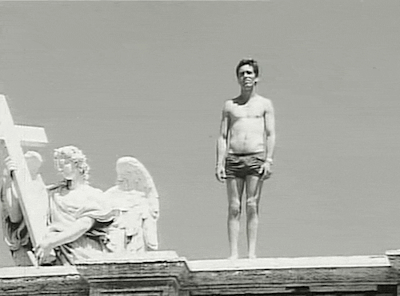


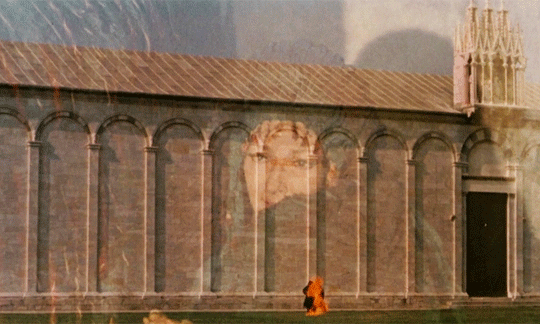
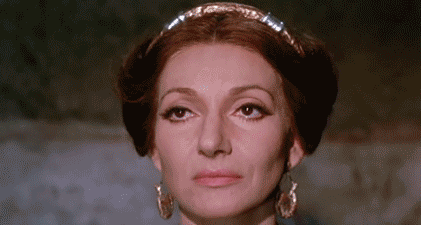
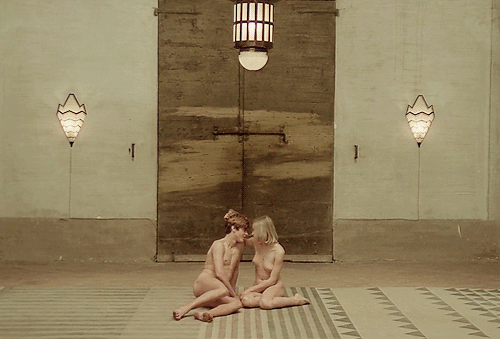

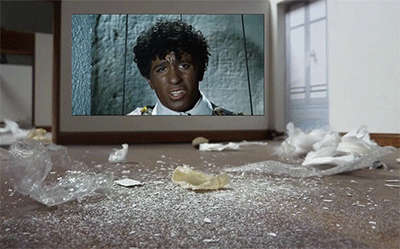
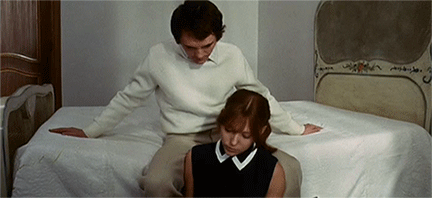
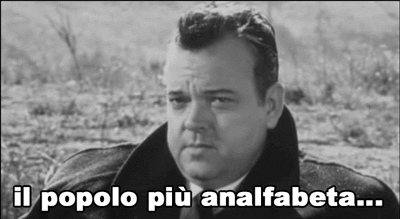
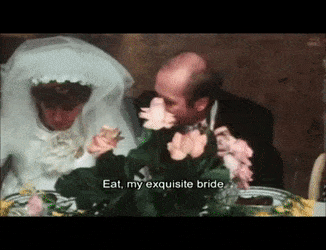

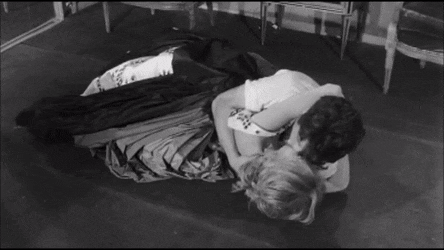

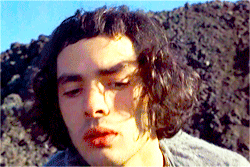
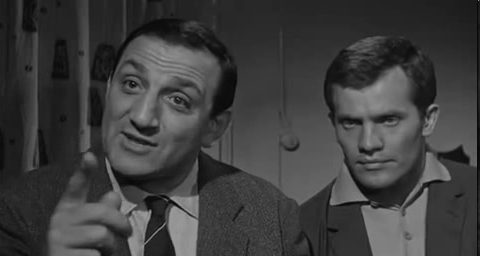
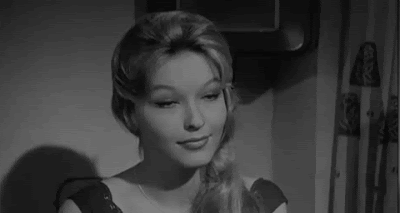
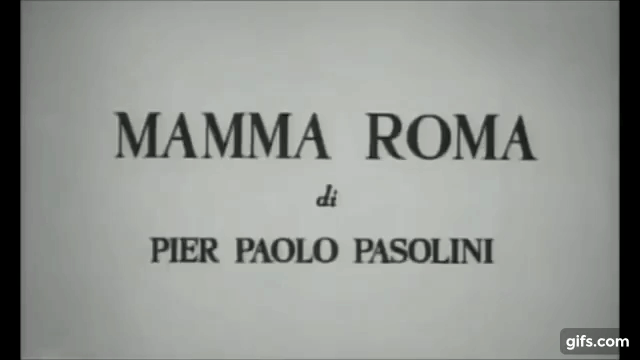
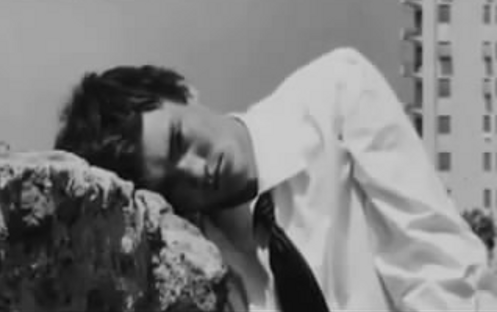
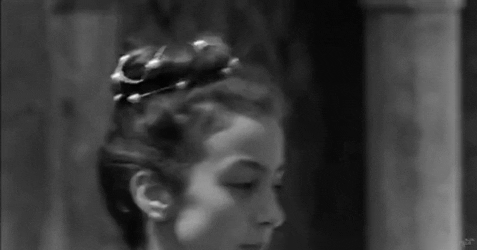

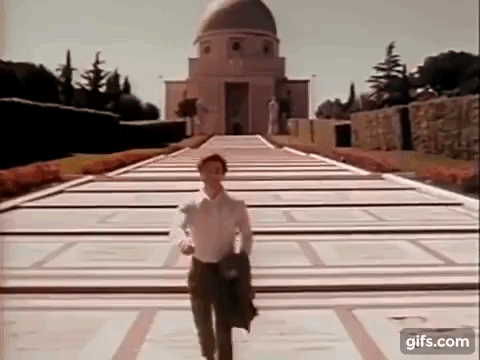
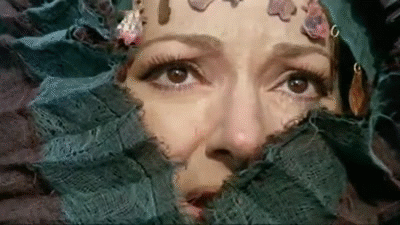
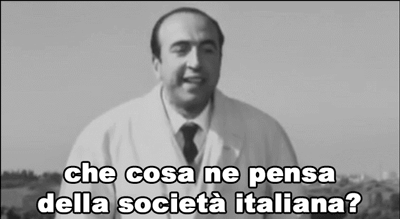


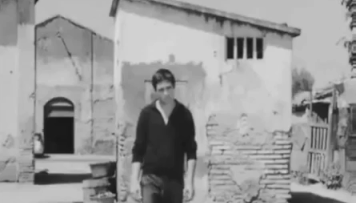
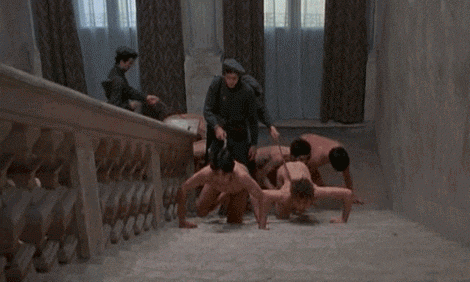
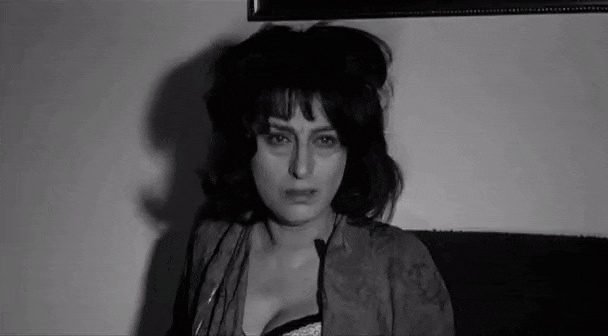


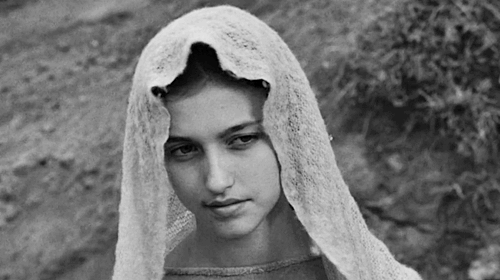
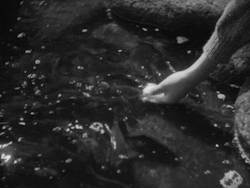
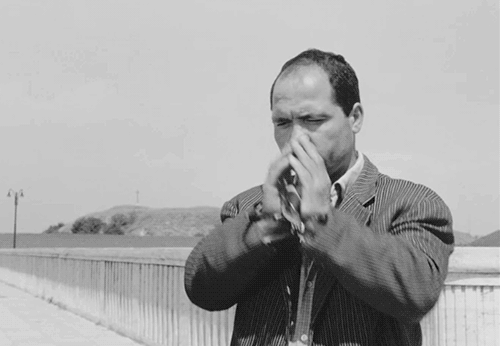
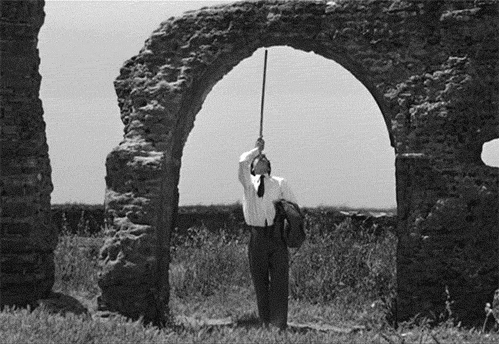
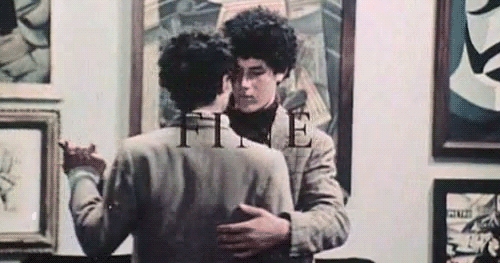

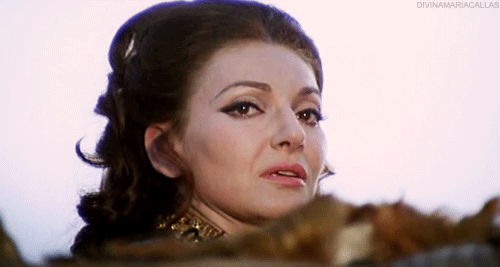
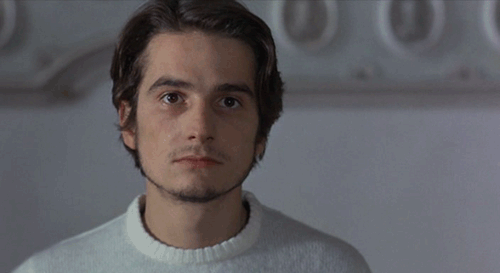
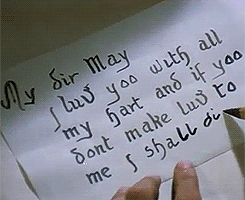
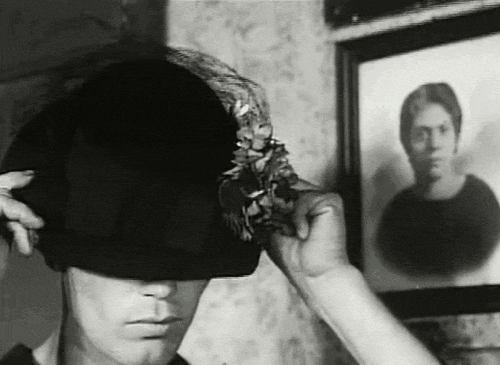
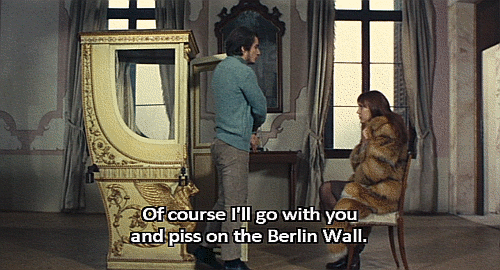



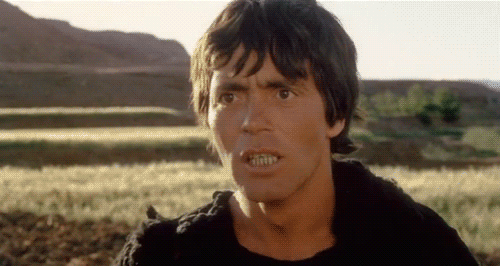
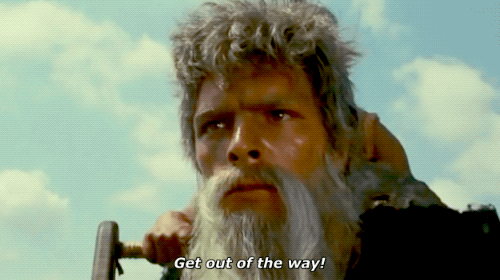

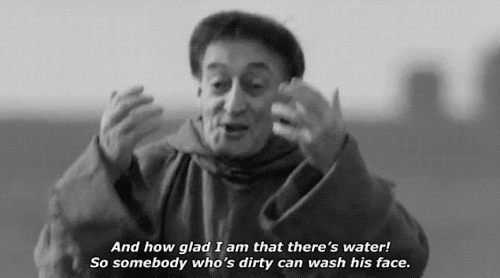
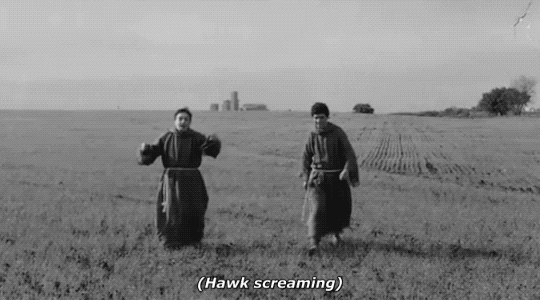

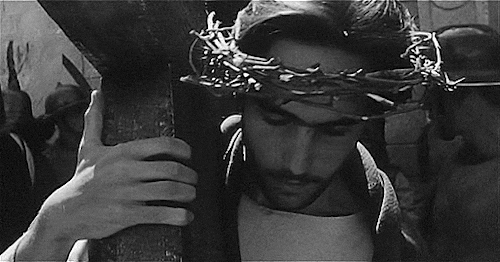
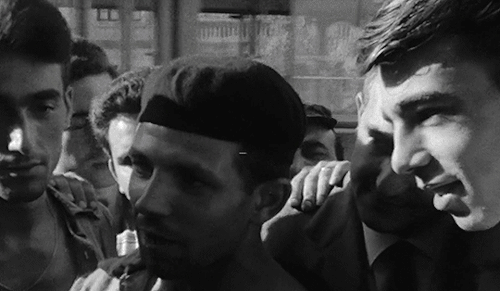
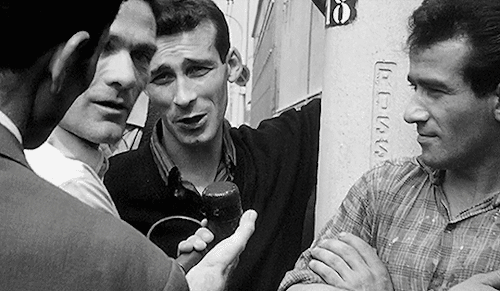

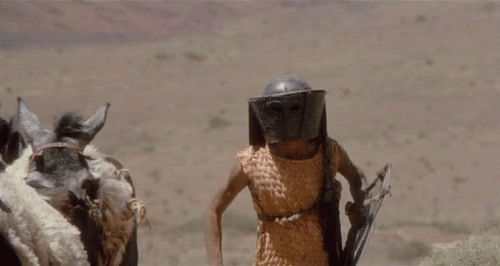
____
Further
Italian Pasolini Website
Pasolini @ IMDb
Pasolini interviewed by Jonas Mekas
Restoring Pasolini
Pasolini @ Senses of Cinema
Who really killed Pier Paolo Pasolini?
Les dernières heures de Pier Paolo Pasolini
Pasolini @ The Criterion Collection
Interview: Pier Paolo Pasolini 1965
Book: Pier Paolo Pasolini Pasolini’s Bodies and Places
Behind the Myth of Pier Paolo Pasolini
Istituto Pier Paolo Pasolini @ Instagram
PIER PAOLO PASOLINI: THE COMPLETE ARTIST
Pier Paolo Pasolini’s Death
THE RELEVANT QUEER
The life and death of Pier Paolo Pasolini
_____
Extras
Pier Paolo Pasolini Speaks
Pier Paolo Pasolini Documentary 1970
Inside the NEU: Pier Paolo Pasolini – Subversive Prophet
Abel Ferrara’s Pasolini – Official U.S. Trailer
__________
Pasolini’s Own Notes on Salò from 1974

Foreword
This film is a cinematographic transposition of Sade’s novel The 120 Days of Sodom. I should like to say that I have been absolutely faithful to the psychology of the characters and their actions, and that I have added nothing of my own. Even the structure of the story line is identical, although obviously it is very synthetised. To make this synthesis I resorted to an idea Sade certainly had in mind – Dante’s Inferno. I was thus able to reduce in a Dantesque way certain deeds, certain speeches, certain days from the whole immense catalogue of Sade. There is a kind of ‘Anti-Inferno’ (the Antechamber of Hell) followed by three infernal ‘Circles’: ‘The Circle of Madness’; ‘The Circle of Shit’, and ‘The Circle of Blood’. Consequently, the Story-Tellers who, in Sade’s novel, are four, are three in my film, the fourth having become a virtuoso – she accompanies the tales of the three others on the piano.
Despite my absolute fidelity to Sade’s text, I have however introduced an absolutely new element: the action instead of taking place in eighteenth-century France, takes place practically in our own time, in Salò, around 1944, to be exact.
This means that the entire film with its unheard-of atrocities which are almost unmentionable, is presented as an immense sadistic metaphor of what was the Nazi-Fascist ‘dissociation’ from its ‘crimes against humanity’. Curval, Blangis, Durcet, the Bishop – Sade’s characters (who are clearly SS men in civilian dress) behave exactly with their victims as the Nazi-Fascists did with theirs. They considered them as objects and destroyed automatically all possibility of human relationship with them.
This does not mean that I make all that explicit in the film. No, I repeat again, I have not added a single word to what the characters in Sade have to say nor have I added a single detail to the acts they commit. The only points of reference to the 20th century are the way they dress, comport themselves, and the houses in which they live.
Naturally there is some disproportion between the four protagonists of Sade turned into Nazi-Fascists and actual Nazi-Fascists who are historically true. There are differences in psychology and ideology. Differences and also some incoherence. But this accentuates the visionary mood, the unreal nightmare quality of the film. This film is a mad dream, which does not explain what happened in the world during the 40s. A dream which is all the more logical in its whole when it’s the least in its details.
Salò and Sade
Practical reason says that during the Republic of Salò it would have been particularly easy given the atmosphere to organise, as Sade’s protagonists did, a huge orgy in a villa guarded by SS men. Sade says explicitly in a phrase, less famous than so many others, that nothing is more profoundly anarchic than power – any power. To my knowledge there has never been in Europe any power as anarchic as that of the Republic of Salò: it was the most petty excess functioning as government. What applies to all power was especially clear in this one.
In addition to being anarchic what best characterises power – any power – is its natural capacity to turn human bodies into objects. Nazi-Fascist repression excelled in this.
Another link with Sade’s work is the acceptance/non-acceptance of the philosophy and culture of the period. Just as Sade’s protagonists accepted the method – at least mental or linguistic – of the philosophy of the Enlightened Age without accepting all the reality which produced it, so do those of the Fascist Republic accept Fascist ideology beyond all reality. Their language is in fact their comportment (exactly like the Sade protagonists) and the language of their comportment obeys rules which are much more complex and profound than those of an ideology. The vocabulary of torture has only a formal relation with the ideological reasons which drive men to torture. Nonetheless with the characters in my film, although what counts is their sub-verbal language, their words also have a great importance. Besides their verbiage is rather wordy. But such wordy verbiage is important in two senses: firstly it is part of the presentation, being a ‘text’ of Sade’s, that is being what the characters think of themselves and what they do; and, secondly, it is part of the ideology of the film, given that the characters who quote anachronistically Klossowsky and Blanchot are also called upon to give the message I have established and organised for this film: anarchy of power, inexistence of history, circularity (non-psychological not even in the psychoanalytic sense) between executioners and victims, an institution anterior to a reality which can only be economic (the rest, that is, the superstructure, being a dream or a nightmare).
Ideology and the meaning of the Film
We should not confuse ideology with message, nor message with meaning. The message belongs in part – that of logic – to ideology, and in the other part – that of irreason – to meaning. The logical message is almost always evil, lying, hypocritical even when very sincere. Who could doubt my sincerity when I say that the message of Salò is the denunciation of the anarchy of power and the inexistence of history? Nonetheless put this way such a message is evil, lying, hypocritical, that is logical in the sense of that same logic which finds that power is not at all anarchic and which believes that history does exist. The part of the message which belongs to the meaning of the film is immensely more real because it also includes all that the author does not know, that is, the boundlessness of his own social, historical restrictions. But such a message can’t be delivered. It can only be left to silence and to the text. What finally now is the meaning of a work? It is its form. The message therefore is formalistic; and precisely for that reason, loaded infinitely with all possible content provided it is coherent – in the structural sense.
Stylistic elements in the film
Accumulation of daily characteristics of wealthy bourgeois life, all very proper and correct (double-breasted suits, sequinned, deep cut gowns with dignified white fox furs, polished floors, sedately set tables, collections of paintings, in part those of ‘degenerate’ artists (some futuristic, some formalistic); ordinary speech, bureaucratic, precise to the point of self caricature.
‘Veiled’ reconstruction of Nazi ceremonial ways (its nudity, its military simplicity at the same time decadent, its ostentations and icy vitality, its discipline functioning like an artificial harmony between authority and obedience, etc.
Obsessive accumulation to the point of excess of sadistic ritualistic and organised deeds; sometimes also given a brutal, spontaneous character.
Ironic corrective to all this through a humour which may explode suddenly in details of a sinister and admitted comic nature. Thanks to which suddenly everything vacillates and is presented as not true and not crude, exactly because of the theatrical satanism of self-awareness itself. It is in this sense that the direction will be expressed in the editing. It is there that will be produced the mix between the serious and the impossibility of being serious, between a sinister, bloody Thanatos and curate Bauba (Bauba was a Greek divinity of liberating laughter or better: obscene and liberating laughter).
In every shot it can be said I set myself the problem of driving the spectator to feeling intolerant and immediately afterwards relieving him of that feeling.
____
Interview
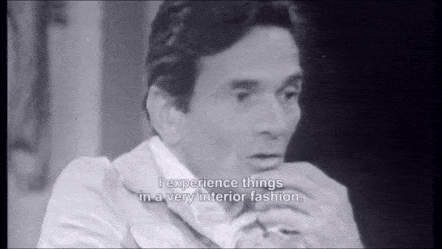
What do you know about Swedish cinema?
I know Bergman, like all other Italian intellectuals. I don’t know anyone else. I’ve heard the names of other Swedish filmmakers but I don’t know their films.
Never seen them?
Never. Rome is a terrible city. There are independent cinemas but the occasions to watch them are very rare.
You don’t have independent cinemas in Rome?
We do, just a couple. It’s not like Paris.
Ladies and Gentlemen, Mr. Pasolini is here to present his new film. He just finished it and it’s about Sodom…
I think this is the first time I’ve made a film for which the original idea wasn’t mine. The film was proposed to Sergio Citti and as usual I was helping him to write the screenplay. As we went along, Citti began losing interest in the film while I was more and more in love with it, especially since I had the idea to set the film in ’45, during the last days of the Republic of Salo. Citti started thinking about another script and abandoned the project all together. And given that I was in love with this project, I completed it. Being based on De Sade, this film revolves around the representation of sex. But this aspect has changed in relation to my last three films that I call “the trilogy of life”: The Decameron, Canterbury Tales and Arabian Nights. In this new film, sex is nothing but an allegory of the commodification of bodies at the hands of power. I think that consumerism manipulates and violates bodies as much as Nazism did. My film represents this sinister coincidence between Nazism and consumerism. Well, I don’t know if audiences will grasp this since the film presents itself in rather enigmatic way, almost like a miracle play, where the sacred word retains its Latin meaning of “cursed.”
Why did you choose the year 1945 for your film?
I wanted to represent the end of a world, past glory days. It was a poetic choice—I could have set it in ’38, in ’39 or ’37, but it would’ve been less poetic.
What’s poetic about that period?
Decadence and twilight are inherently poetic. Had I set it in the heyday of Nazism, it would’ve been an intolerable movie. To know that all this took place in the last days and that it would soon be over gives the spectator a sense of relief. Substantially this is a film about “true anarchy,” that is, the anarchy of power.
You are a poet and a filmmaker. Is there a relation between these two roles?
As far as I’m concerned, there is a profound unity between the two of them. It’s as if I were a bilingual writer.
What is the title of your new film?
The title is Salò, the name of a town by the Garda Lake, which was the capital of the Fascist Republic. It’s a multipurpose title. There is an ambiguity to it: the complete title will be Salò and the 120 days of Sodom. Anyway, there is no historical reconstruction of that era, no truly historical relation: there are no Mussolini portraits; no one does the Roman salute. It’s all given.
How do you fund your films? Are they commercially successful?
The funding process is the normal one. I have a producer.
You don’t have problems?
I don’t have problems since only Porcile and Medea were commercial flops. All the others did well at the box office. Accattone was the crucial one. It didn’t do super well, but good enough for a beginner. Ever since then, I haven’t had any problems.
Do you work totally within the commercial system?
Yes, totally.
Does this mean that one can make very personal and very poetic films within the “system”?
Yes, in Italy is possible. I’m not the only one. Fellini, for example, does it too.
You and Fellini are very established directors. Is it the same for a 25-year-old filmmaker?
It’s hard for young people, but that applies to all professions. A young doctor, for instance, struggles as much. In most instances, directors like myself help young ones to get started, like I did with Bernardo Bertolucci. Perhaps Bergman, if he had faith in some young director, could help him/her to make a movie.
Since you have the possibility to make movies within the “system,” how do you choose your themes? Do you enjoy the same freedom you have when writing poetry or you need to keep the audience in mind? Isn’t it a problem?
This is neither a moral, political nor a practical problem. It is an aesthetic one insofar as it concerns the metrics and the prosody of a film that in turn influence the readability and “simplicity” of it. Let me be clearer: let’s take into consideration the extreme case of an avant-garde film, an “illegible” one as Philippe Sollers would say, and a literary text of the same kind. Well, between the two of them the film is definitely more legible. There is a higher grade of simplicity and readability that is inherent to the cinematographic technique itself.
Is it possible in Italy to keep making movies if you’re not commercially successful?
It can happen that, in spite of not being successful, one can try again as long as failure is strictly commercial and the film has a certain quality.
Have you bid farewell to the realism of your first features for good?
I don’t agree with this. After 15 years in Italy, they finally showed Accattone on TV. We realized it is not a realist film at all. It’s a dream, it’s an oneiric movie.
Didn’t they consider it a realistic film in Italy?
Yes, but it was a misunderstanding. When I made it, I knew I was doing a very lyrical film, not oneiric as it now seems, but deeply lyrical. I used that soundtrack and shot it in a certain way for a reason. Then what happened was that the realistic world I drew inspiration from for Accattone disappeared; it is no longer there, so the film is a dream of that world.
Mamma Roma is realist…
Mamma Roma is more realistic than Accattone, maybe. I should watch it again. It is less accomplished, less beautiful and that’s because it is less dream-like.
What is your training in cinema?
I’ve got none. I’ve trained by watching films, starting with two great and precise passions, Charlie Chaplin and Kenzo Mizoguchi [sic]. They are the two poles within which everything happens in my films. In fact, my movies are a mix of what stylists call “comic” and “sublime,” intended here as stylistic categories. Even in Oedipus Rex, which is supposed to be a highly stylistic and sublime work, the comic aspect sneaks in. In fact, I have always seen reality in cinema as a comic element. But we have to be careful to not attribute too ordinary a meaning to the term “comic.”
You have been and still are a writer. How did you decide to make movies?
It’s a long story. When I was a boy, 18 or 19 years old, for a while I wanted to be a director. Then the war came along and abolished any hope and possibility. I found myself in a series of circumstances: I published my first novel, Ragazzi di Vita, which was rather successful in Italy, and subsequently, I was asked to work on screenplays. When I shot Accattone, it was the first time I laid my hands on a movie camera. I hadn’t even ever taken a photograph. To this day, I cannot take good pictures.
Where do you see yourself in the future? More in cinema or literature?
At the moment I’m thinking about making a couple of more films and then to dedicate myself completely to literature again.
Are you being honest?
In this precise moment I am. I hope to be honest.
Is the act of shooting a movie tiresome? It seems, though, that in Italy it is more pleasant. Do Italians have more fun?
I have lot of fun. It’s a marvelous game. It is very tiresome, especially for me being a cameraman, too, having to carry the camera all the time. So it’s a muscular effort too, but it’s still great fun.
How is your crew? Are there loads of people?
No, it’s as small as possible.
Do you always shoot in 35mm?
Yes, always in 35mm.
Does it take a long time to learn?
You learn everything in 15 minutes.
You prefer non-professional actors. How do you work? Do you look for a setting and then choose the people?
No, it’s not exactly like this. If my film is set in a working class environment, I choose ordinary working men and women, non-professional actors, since I believe it’s impossible for a middle-class actor to pretend to be a peasant or a factory worker. It would sound false in an intolerable way. But if I make a film set in a bourgeois milieu, since I cannot ask a lawyer or an engineer to act for me, then I pick professional actors. Naturally, I’m referring to Italy, how it was ten years ago. If I were in Sweden, I would probably always use actors since there is no difference anymore between a middle class and a working class man there. I’m talking about physical differences; in Italy, there is the same difference between the middle and working class as there is between a white and a black man.
In your last film, there are no religious elements, is that right?
I’m not sure there were not religious elements in my last films. In Arabian Nights, for example, there is a religious tone throughout the film. There wasn’t any denominational religiosity, any straight religious theme, but a mystical and irrational situation was there for sure. The “Ninetto” episode, which is the central part of the film…
Have you taken part in a dialogue between Marxists and Catholics in Italy?
There are no more Marxists and Catholics in Italy—there are no more Catholics in Italy.
Can you explain the situation to us then?
In Italy, there was a revolution, and it was the first one in its history, while other capitalist countries have had at least four or five revolutions which have unified the [respective] countries. I’m thinking of the monarchic unification, the Lutheran Reformation, the French Revolution and the first industrial revolution. Italy instead had its first one with the second industrial revolution, namely consumerism, and that has radically changed Italian culture in anthropological terms. Before that, the difference between the middle and the working class was as marked as that between two races. Now it’s almost vanished. And the culture that has been destroyed the most is the rural one, that is, the peasants. So the Vatican does not have this mass of Catholic peasants behind it anymore. Churches are empty; seminaries, too. If you come to Rome, you don’t see clerical students walking the streets anymore, and in the last two elections, the secular vote has triumphed. Marxists, too, have been anthropologically changed by the consumer revolution. They live differently, have a different lifestyle, different cultural models and their ideology changed as well.
Are they Marxists and consumerists at the same time?
There is this contradiction—all those who consider themselves either Marxists or Communists are consumerists, too. Even the Italian Communist Party has accepted this development.
When you refer to Marxists, are you referring to the Communist Party or other factions?
Whatever. Communists, Socialists, hardliners. For example, Italian hardliners plant bombs and then watch TV in the evening.
Does a society divided into classes still exist?
Classes are still there but—and this is the Italian peculiarity—the class struggle is on the economic level and not on a cultural one anymore. Between a middle and a working class man the difference is economic, not cultural anymore.
What about the neo-fascist movement?
Fascism is over since it rested upon God, family, homeland and the army, which are now meaningless words. There are no more Italians who get emotional in front of the flag.
There is a general decay of Italian society today, isn’t that true?
I consider consumerism a worse fascism than that the classical one, because clerical-fascism did not transform Italians. It did not get into them. It was totalitarian but not totalizing. I’ll give you an example: fascism has tried for twenty years to eliminate dialects and it didn’t succeed. Consumerism, which, on the contrary, pretends to be safeguarding dialects, is destroying them.
Do you think there is a certain balance between these different forces?
There is a chaotic balance.
Where does this chaos come from?
It’s the Italian “growth” crisis. Italy swiftly passed from being an underdeveloped to a developed country. And it all happened within five, six or seven years. It’s like taking a poor family and turning them into billionaires. They would lose their identity. Italians are going through a period in which their identity is being lost. All the other countries instead are either already developed and have gradually begun to [lose their identities] in the past two centuries or are like the Third World, pre-developed.
Be Tiresia. Make a prophecy. Is there hope for the future?
I should be Cassandra rather than Tiresia. I asked two Swedish guys I was talking to today whether they felt closer to a humanist or a technological civilization. They replied, rather sadly, that they feel like they’re the first generation after about thirty generations that’s any different from what has come before. To wrap up, everything I’ve said here represents my own views. If you speak with other Italians, they will tell you, “Oh, that crazy man, Pasolini.”
____________
19 of Pier Paolo Pasolini’s 28 films
____________
Accattone (1961)
‘Pier Paolo Pasolini made his first film, Accattone, when he was almost forty years old. Pasolini had, however, already collaborated on many other films: Fellini’s Notti di Cabiria (1957), Bolognini’s Il Bel Antonio (1959), La Notte brava (1959), La Giornata balorda (1960), and Bertolucci’s La Commare Secca (1962).
‘Accattone was released in 1961. Accattone, known in the U.S.A. as Accattone! and The Scrounger, and The Procurer in the U.K., means “beggar” in English. It is based on Pasolini’s 1959 novel Una vita violenta (A Violent Life). According to Pasolini specialist, Marc Gervais, with whom I had the honor of studying in the early 1970s, Accattone was an “honorable film” which was well received by the Italian press. Gervais wonders why?
‘The film didn’t stand out at the time: the period in which Accattone was made (from 1959 to 1963) is considered by many as being one of the most creative years in the history of cinema: Fellini, Bergman, Hitchcock, Visconti, Bresson, Antonioni, Olmi, Godard, Truffaut, Cassavetes, Monicelli, Chabrol, Camus (Black Orpheus), Rohmer and so many other fine filmmakers would alter the way we experienced film as an art medium. Yet Accattone has aged remarkably well.’ — Antonio D’Alfonso
the entirety
______________
Mamma Roma (1962)
‘Anna Magnani is Mamma Roma, a middle-aged prostitute who attempts to extricate herself from her sordid past for the sake of her son. Filmed in the great tradition of Italian neorealism, Mamma Roma offers an unflinching look at the struggle for survival in postwar Italy, and highlights director Pier Paolo Pasolini’s lifelong fascination with the marginalized and dispossessed. Though banned upon its release in Italy for obscenity, today Mamma Roma remains a classic, featuring a powerhouse performance by one of cinema’s greatest actresses and offering a glimpse at a country’s most controversial director in the process of finding his style.’ — The Criterion Channel
the entirety
______________
The Anger (1963)
‘La Rabbia (The Anger) is an Italian documentary film produced by Gastone Ferranti and directed in the first half by Pier Paolo Pasolini and in the second half by Giovannino Guareschi. It was released in 1963. Both directors, a communist and a reactionary, tried to answer the question: “What is the cause of the dissatisfaction, fear and conflicts that shake society?’ — AGS363
the entirety
_______________
Comizi d’amore (1964)
‘Microphone in hand, Pier Paolo Pasolini asks Italians to talk about sex: he asks children where babies come from, young and old women if they are men’s equals, men and women if a woman’s virginity matters, how they view homosexuals, how sex and honor connect, if divorce should be legal, and if they support closing the brothels (the Merlina Act). He periodically checks in with Alberto Moravia and Cesare Musatti. Bersani is intrusive and judgemental, prodding those who answer. The film’s thesis: despite the booming post-war economy, Italians’ attitudes toward sex are either rigidly Medieval (the poor and the South) or muddled and self-censoring (the bourgeoisie and the North).’ — jhailey
Trailer
Excerpt
______________
The Gospel According to St. Matthew (1964)
‘Pier Paolo Pasolini was an atheist, indeed a Marxist, and his The Gospel According to Matthew is routinely interpreted as a proto-Marxist allegory. Yet Pasolini was perhaps first of all a poet, and the concepts of the sacred and the divine, far from repelling him as so much religious superstition, held for him a powerful appeal. In 1962 he came to Assisi in response to Pope John XXIII’s call for dialogue with non-Christian artists. While there, he read through a book of the Gospels “from beginning to end, like a novel,” later proclaiming the story of Jesus “the most exalting thing one can read.”
‘As a result of this experience, Pasolini became consumed with the notion of filming the life of Christ straight from one of the Gospels, shooting without a screenplay and taking no editorial license with the text. After completing The Gospel According to Matthew, he dedicated it “to the dear happy familiar memory of John XXIII.”
‘Pasolini edits, but doesn’t rewrite; he omits some scenes and rearranges others, but on a scene-by-scene basis he follows Matthew’s dialogue almost verbatim, neither changing nor adding. (A few very minor departures are allowed, such as putting Matthew’s list of the names of the twelve disciples onto Jesus’ lips.)
‘What most differentiates Pasolini’s method from that of subsequent word-for-word productions such as The Gospel of John is Pasolini’s reliance on the image as the cinematic equivalent of the sacred writer’s narration. There is no voiceover narrative in The Gospel According to Matthew; whatever Matthew tells us himself, as opposed to reporting other people saying, must either be understood from the images or else be lost.’ — Decent Films
the entirety
_______________
Sopralluoghi in Palestina (1964)
‘In 1963, accompanied by a newsreel photographer and a Catholic priest, Piero Paolo Pasolini traveled to Palestine to investigate the possibility of filming his biblical epic The Gospel According to Matthew in its approximate historical locations. Edited by The Gospel‘s producer for potential funders and distributors, Seeking Locations in Palestine features semi-improvised commentary from Pasolini as its only soundtrack. As we travel from village to village, we listen to Pasolini’s idiosyncratic musings on the teachings of Christ and witness his increasing disappointment with the people and landscapes he sees before him. Israel, he laments, is much too modern. The Palestinians, much too wretched; it would be impossible to believe the teachings of Jesus had reached these faces. The Gospel According to Matthew was ultimately filmed in Southern Italy. Mel Gibson would use some of the same locations forty years later for The Passion of the Christ.’ — Ubuweb
Excerpt
______________
The Hawks and the Sparrows (1966)
‘Literally meaning “Ugly Birds and Little Birds,” this was allegedly Pasolini’s own favorite among his films — and is definitely among mine — though it’s certainly not for everyone. This is essentially a tale of inherently innocent, naive characters caught up between Marxist (as represented by the crow) and Christian ideals. Nearly all of Pasolini’s early films — Accattone, Mamma roma, La ricotta, and even the documentary Comizi d’amore — reflect these contradictory themes and contain religious themes. Uccellacci e uccellini served as something of a warm, humorous farewell to those themes as Pasolini moved on to a mythic cycle after this. A fact reflected by the whimsical score from Ennio Morricone — and one of the best opening credits sequences of all time where Domenico Modugno sings the credits — this is among the lightest of all Pasolini’s films.’ — Samm Deighan
Trailer
______________
Oedipus Rex (1967)
‘Given Pier Paolo Pasolini’s proclivities towards sex, violence, politics, and spirituality, it comes as little surprise that he would, at some point, attempt to tackle the Oedipus myth. I’m going to assume we’re all somewhat familiar with the outlines of the story and dive right into spoilers, as the story is essentially the same in Pasolini’s film as the legend tells us, with some important changes to the character of Oedipus. Rather than make any decisions logically and intelligently, this Oedipus (Franco Citti, perhaps most widely known as one of Michael bodyguards in the Sicilian sequence of The Godfather) is a raging animal. In the original myth, when Oedipus unknowingly confronts his birth father on the road, their battle stems from an argument over who had the right to travel onward first. In this version, Oedipus simply hurls a rock at one of the guards, instigating a really wild brawl.
‘This speaks to a larger attempt to remove the intellectual overtones of the Oedipus myth, which has long been best associated with the complex Sigmund Freud associated with it. The problem, of course, is that in the myth, Oedipus didn’t consciously kill his father nor fall in love with his mother, and in fact the realization of this causes no small amount of horror within him. While Oedipus was traditionally an intellectual character (here he bludgeons the Sphinx, rather than answer a riddle), the intellectual angle that was later ascribed was never truly part of the original myth. By stripping Oedipus down to almost an animal, Pasolini gets at the simple urges that drove much of his actions and emotions.’ — Scott Nye
Trailer
the entirety
______________
Pasolini intervista: Ezra Pound (1967)
‘Ezra Pound, an acclaimed modern American poet living in Rapallo, was tried for treason because of his radio broadcasts extolling Mussolini. This is Pasolini’s interview with him.’ — IMDb
Excerpt
_____________
What are the clouds? (1967)
‘What are clouds? revolves around a performance of Shakespeare’s Othello as a marionette theater—with the marionettes played by actors on strings questioning both their roles and their actions, eventually rebelling against the narrative and the puppeteer.’ — Italian Cultural Institute
the entirety
_____________
Teorema (1968)
‘One of the iconoclastic Pier Paolo Pasolini’s most radical provocations finds the auteur moving beyond the poetic, proletarian earthiness that first won him renown and notoriety with a coolly cryptic exploration of bourgeois spiritual emptiness. Terence Stamp stars as the mysterious stranger—perhaps an angel, perhaps a devil—who, one by one, seduces the members of a wealthy Milanese family (including European cinema icons Silvana Mangano, Massimo Girotti, Laura Betti, and Anne Wiazemsky), precipitating an existential crisis in each of their lives. Unfolding nearly wordlessly in a procession of sacred and profane images, this tantalizing metaphysical riddle—blocked from exhibition by the Catholic Church for degeneracy—is at once a blistering Marxist treatise on sex, religion, and art and a primal scream into the void.’ — The Criterion Collection
Excerpt
__________
Orgia (1968)
‘The tragic and self-destructive sexual battle between a man and his wife. A drama for the desperate struggle of those who are different against the normality that rejects the margins. The couple is preparing to consume a relationship of extreme sadomasochism. Recorded theatre production.’ — Ulf Kjell Gür
the entirety
_____________
Porcile (1969)
‘Pier Paolo Pasolini’s Porcile (Pigsty) was shown at the Venice Film Festival in 1969 and was harshly criticized for its scandalous and desecrating character. It is indeed a provocative and bleak film, which offers a scathing political critique of ongoing fascism but without seeming to allow for any space for intervention or change. With Porcile, Pasolini continues to distance himself from Marxist engagement and revolutionary politics, and while he characterizes its politics in terms of an ‘apocalyptic anarchy’ that can only be approached with distance and humour, our suggestion is that Porcile proposes abandoning (political) activity and hope for a better future as a paradoxical form of both radical political critique and joy.’ — Manuele Gragnolati and Christoph F. E. Holzhey
the entirety
__________
Medea (1969)
‘In the prologue, the centaur explains the child that he will witness an existence that is based more on deeds than thoughts. Ironically, the opening is a guide for approaching Pasolini’s episodic, carnivorous, operatic impressionism, with bizarre cacophonies of traditional Iranian and Japanese music. Indeed, there are two halves. The first one depicts the story of Jason and the argonauts in their search of the golden fleece. The second half ventures into the revenge plot structure of Euripides’ myth after Jason betrays Medea. This is more a complement than a counterpart to the auteur’s other 1969 release, Porcile. The halves, nevertheless, do not intertwine. The preceding tribal, animalistic nature of the argonauts contrasted with the stunning landscapes of Syria and Turkey is devoid of dialogue and takes us back to a more primal state of humankind; the second episode is also animalistic, using overimposed images to distinguish between imagined fantasies and reality, or so it seems.
‘Maria Callas’ sole film participation might be a distraction for those that sought her opera singing talents. Her gaze will never leave your soul, though. The film is uncompromising in its representation of extreme passions and both ritualistic and carefully planned savagery. It is theatrical in its presentation; however, unlike Kakogiannis’ emphasis on spoken dialogue and mannerisms to keep faithfulness towards the literary structure, Pasolini embraces his always transgressive focus on the flesh and exploits, through a very confident and stunningly-looking direction, the more extreme sides of the myth, not for provocation, but for artistic purposes. He never declared himself an historian and it shows in his open adaptations of both history and literature.
‘Undervalued and underlooked Pasolini film. Although much superior cinematic quality was shown by Fellini that same year, this companion piece of Edipo Re (1967) showed that this guy had nothing to ask from Kakogianni’s most prestigious Greek tragedy adaptations!’ — Edgar Cochran
the entirety
______________
Le Mura Di Sana’a (1971)
‘Documentary footage of the city of Sana’a in Yemen, one of the oldest continually inhabited cities in the world, with a voice-over calling for UNESCO to protect the city’s architectural heritage before it is destroyed by development.’ — IMDb
the entirety
_____________
Decameron (1971)
‘Pier Paolo Pasolini weaves together a handful of Giovanni Boccaccio’s fourteenth-century moral tales in this picturesque free-for-all. The Decameron explores the delectations and dark corners of an earlier and, as the filmmaker saw it, less compromised time. Among the chief delights are a young man’s exploits with a gang of grave robbers, a flock of randy nuns who sin with a strapping gardener, and Pasolini’s appearance as a pupil of the painter Giotto, at work on a massive fresco. One of the director’s most popular films, The Decameron, transposed to Naples from Boccaccio’s Florence, is a cutting takedown of the pieties surrounding religion and sex.’ — The Criterion Collection
the entirety
_______________
The Canterbury Tales (1972)
‘Chaucer is the literary source of inspiration this time. The transgression is pumped up to 11, eroticism is lost and all that remains is a stream of consciousness that, along with Buñuel, inspired the Monty Python Crew to reach the superior heights of The Meaning of Life (1983). This works more as a disorganized stream of consciousness rather than an episodic retelling of several tales that could be interconnected in many ways. A unisone thematic is utterly lost, except for the obsession with sexuality (which shows the human body no longer under a perspective of Renaissance paintings, but as gross-out sexual humor) and that is what I think are the main complaints against this.
‘If this was a lost italian gem rediscovered and restored decades later, like Criterion did, and not directed by Pasolini, this would be seen with different eyes. This is somewhat condemned to be seen under the greater shadow of Il Decameron (1971) and, although the quality decrease is noticeable, an assured auteurism still stands. There are some questionable Chaplinesque stunts and some faith jumps between humor styles that highlight the ridiculousness of the human condition propelled by religious fundamentalisms, particularly the Catholic Church (and, once again, I fully agree). I simply flowed with them nicely: anarchich storytelling does not bother me as long as you keep the creativity engine on. Plus, the use of filming locations and the immaculate art direction are a wonder to behold.
‘Yes, the final sequence is absolutely maddening, and I applaud it. More than obviously, it’s not meant to be Biblical. It’s more like Alighieri’s soul would have a laugh with it. Props for, in my honest opinion, the third best imaginative envisioning of hell in cinema (I know you will be curious enough to ask me what the other two are).’ — Edgar Cochran
Trailer
the entirety
_______________
Arabian Nights (1974)
‘If The Decameron represented an intense vision behind its humourous facade, and The Canterbury Tales – the trilogy’s weak point – a loss of ground amid a welter of sexual exhibitionism, the Arabian Nights emerges as a wonderfully relaxed and open puzzle of interlinked tales dedicated to the multiplicity of truth. It yields an engrossing array of mysterious, profound and liberating moments. The tales revolve around slaves and kings, demons, love, betrayal, loss and atonement. Zumurrud (Pellegrina), a slave turned monarch, after her ‘drag’ wedding, amid delightfully conspiratorial laughter, reveals her true sexual identity to her diminutive (and equally delighted) bride. Shot on location in North Africa, the film has rarely been seen in Britain after its release in 1975 by United Artists – in an insanely dubbed version, ludicrously cut by the censor.’ — Time Out (London)
Excerpt
Excerpt
______________
Salò, or the 120 Days of Sodom (1975)
‘The notorious final film from Pier Paolo Pasolini, Salò, or The 120 Days of Sodom has been called nauseating, shocking, depraved, pornographic . . . It’s also a masterpiece. The controversial poet, novelist, and filmmaker’s transposition of the Marquis de Sade’s eighteenth-century opus of torture and degradation to Fascist Italy in 1944 remains one of the most passionately debated films of all time, a thought-provoking inquiry into the political, social, and sexual dynamics that define the world we live in.’ — The Criterion Collection
Trailer
*
p.s. Hey. ** _Black_Acrylic, Hi, Ben. Cool, yeah, the Lucy K Shaw book is wonderful. I don’t know that book you were gifted with at all, and it does sound extremely wantable. I’ll look to score it. Enjoy. Fine weekend to you, sir. ** David Ehrenstein, Thank you very much for including my ‘Swarm’. xo. ** Sypha, Hi. Yes, I’ve been seeing your current reading updates on FB, and you’re Mr. Snuggly Press lately, which I can only assume is a very good thing btw. Any progress on your experimental fiction project. I’m quite curious to see what ‘experimental’ means to your writing. ** Dominik, Hi, Dominik! They’re all very worthy. Maybe it’s just me, but battling against normalising and convention-seeking people in power has been a lifelong war, which is totally winnable if you don’t mind being sidelined by those same powers-that-be as ‘cult’. Wait, your birthday is this weekend? Or maybe you mean the next Sunday. If it’s tomorrow, gift yourself with, well, everything that stupid money allows. Ball doll vs. tattoo … toughie, I can see that. Okay, based on your enthusiasm, I will get my hands, etc. on that Edouard Louis book immediately, hopefully even today assuming the Paris stores have it on sale in English, which seems kind of logical. Thanks! Your excitement is palpable and contagious! So, how was your weekend, possible (or not) birthday person? Thanks for your manic love. Your love giving one of the copies of the books of mine that he bought to a zillionaire whose dream in life suddenly becomes financing a movie co-directed by me and the rest of the copies to sad emo kids worldwide and including in every copy the URL for the new issue of SCAB which doubles as a scratch-and-sniff aphrodisiac, G. ** Bill, Hi. Katie Jean Shinkle published a great chapbook last year and has a new novel coming out, I think, and I’m not sure about Shane Jones, but I assume that something of his must be on the horizon. Yes, I haven’t read Clowes in perhaps as long as that. He drew a portrait of me for The Believer once, and that was a great gift. ‘Stunt’: noted. Restful but propulsive weekend to you! ** Okay. Some of you are probably thinking, This blog has been around forever and it has never done a Pasolini post before?! I admit it is strange. It might be partly because, unlike every other discerning film buff I’ve ever known, I feel kind of ambivalent about Pasolini’s films and, at the same time, perpetually waiting for my moment of enlightenment to occur. One of these days, no doubt. Blah blah … enjoy a Pasolini-dominated weekend. See you on Monday.




 Now available in North America
Now available in North America 
Pasolini is ne of the greatest cutural figures of the 20th Century. I met him twice. First in 1966 whn he attended the New York Film Festival where “Accatone” and “The Hawks and the Sparrows” were screened. The second time was 1969at aspecial screening of “Teorema” at the Museum of Modern Art. The MOMA audicence was “scandalized” by the film in a way that drove Parolini into an extended fit of laughter. I interviewed him the next day. He was staying at the Pierre hotel whch suited a man as outwardly elegant as Pasolini. he was from the upper mddle class.But untilk e Visconti he didn’t keep to his class. Like Gore Vidal he was in revolt against it. But as he discovered there were extents and limits to a revolt such as his. The Communist Part whc ws middle-class andsexually infantile rejected him for being gay. He was, as we say today, “Openly Gay”long before Stonewall. He didn’t however like men of his own class. In fact his cruising amidt the sub-proletariat ledto such works as “Ragazzi di Vita” and “Accatone” (though neither had muc gay “content”)
Nineyyo Davoli was the love f his ife. He met him while shooing “The Gospel According to Matthew” as Ninetto was hanging around the set. He immediately discovere that this lower-classyouthwith an enormous smile was a born actor and paired him with veteran comic Toto for a series of films. My Favorite (and my favorite Pasolini film) is “Che Cosa Sono Nuovole?” (“What are Clouds”>) — which you ccan find linked above.
Pasolini had a very romantic view of the ower classes whose “vitality” was he felt exmplary. The “Trilogy of Life” dealswith this as reflected in pre-capitalist socies depected in the film. “Arabian Nights” is my faveof the three.
After tis he grew disillusioned. The films werebox office hts because audiences found thm “sexy” which ws not his intention. Moreover the lower classes he once loved were now corrupted by consumer goods — whcih was all they wanted. He then made “Salo” to sow they were heidn g for the slaughter.
It should be noted thatNonetto plays no role in “Salo” –a fac t that speasks for itself. Pasolini knew his love for Ninetto was impossibe because of class eduation ad age difference. Moeover while Ninetto loved to make loe wiht “Pa” he was primarility heteroseual and got married and had a family. Paolini had dinner with inetto and his wife and child the last night of his life.
the italian fascist ahd been at war with Paoslini throughput his life They were constantly having corts indict him for “obscenity” because he dared vaunt the lower classes. They thought “Salo” was going to be a contemporary exposeof their deeds — rather than the historical artifice it was (iteven contains a scene from Paul Vecchili’s “Femmes Femmes” which Pasolini adored)
His death was regarded by his enemies, and those with no undertaning f him as the “last scene” of “Salo” He was planni g however to do a modern dress versio of the life of “Saint Paul” set in New York. Pasolini would have had a lot of fun in 70’s New York.I can just see him at Studio 64 -redruiting its wwates to star in his film.
There’s a tribute to Pasolini in Nanni Moretti’s “Caro Diaro” I aso reccomend Abel Ferrara’s “Pasolini” in which Willem DaFoeis excellent. Physically he is quite like the Italian auteur.
The fascist broke into the lab in an attempt to detroy “Salo.”But the reels thy abscnded with wre from “Fellii Casanova” — necssitating the great master (ho Pasolini worked with so memorably on “Nghts of Cabriia”) reshoot several scenes and cancel the shooting of an episode he’s planne feagturing Barbara Steele.
I’m so jealous that you met and interviewed Pasolini! Is there a link to your interview? Was the interview in Italian? I had no idea he had dinner with Ninetto and his wife the night he was murdered? He went to a restaurant with a rent boy, Pelosi, who ended up being convicted of his murder. And the night before he was in Stockholm.
Alas no link as the interview was never written up, Ididn’t have my tape recorder with me so I just took notes.
He saw the rent boy later. As Abel Ferrara’s film shows he bought him dinner, then took himoff to the beach at ostia for sex. It was there he was murdered by the fascists whowere waiting for him. The rent boy was charged with the killing — in which he didn’t participate — and sevred some time for it. The actual killers got away scot-free.
Oh, I see 🙁
Dennis! I’m SO happy you’ve done a Pasolini post. You made my weekend. This post is a gem, a gift. I saved/ stole so many things from it! I love that extract from his novel Teorema; it sounds like such a good English translation, too. I’ve been looking for this translated novel, but I haven’t been able to find it anywhere, which deeply upsets me. That interview you shared is a diamond, too, esp this line:
Decadence and twilight are inherently poetic.
I have to admit though I am extremely surprised to find you feel so ambivalent towards Pasolini’s films… I don’t love all of them either, nor have I watched them all, but I do adore Teorema and Salo and there are elements in these two that I’ve also spotted in your novels, although I can see that his cinematic style is quite different from yours… Perhaps his films are a bit too maximalist and OTT for you?
How do you feel about his poetry? I love his poetry even more than his cinema, although this could be because I generally prefer poetry to cinema. His selected poetry translated by Stephen Sartarelli is insanely sublime… do you have the book (The University of Chicago Press, 2014)? If you don’t, I’d love to send you a copy. Here’s one of my fave stanzas from the beginning of the book:
You, David, are like a bull on an April day/ in the hands of a laughing boy,/ gently bound for slaughter.
Re Pasolini’s death, again, I’m very interested to know what you think. I am aware that there are many, including one of his close friends, who believe his assassination was a staged suicide or something… What do you think of Abel Ferrera’s film? I found the trailer a bit too American, so haven’t watched the film… part of me wants to, though.
Anyway, sorry about the lengthy comment and my endless questions; I got too excited! Obviously, don’t feel obliged to respond to all. Big hug
Hey Dennis… by the experimental fiction thing I assume you mean that short story I was writing for Justin’s next Neo-Decadent anthology? If so that was finished and accepted, though it’s still being edited… the early drafts of it were more experimental I guess than the final form; Justin decided that experimental writing wasn’t my forte and that I should instead focus on my real feelings about modern life, so in the end it became more of a “James Champagne does Leon Bloy/Michel Houellebecq” affair… I joked it’ll probably get me cancelled, ha ha. Anyway I’m taking a long break from short stories now: in this new one I made an explicit reference to my “Kali Yuga” story from USERLANDS, because that was my first professionally published short story and this new one will probably be my last one (for awhile at least, and not counting the stories in my 3rd and 4th collections that are still waiting to be published).
Nice to have this weekend overview of Pasolini. And glimpses of Pierre Clementi, heh. I’ve only seen a few of the obvious items (Salo, Porcile, Teorema, etc), will add more to my watchlist. What would you suggest?
The Christian Marclay show had some nice collages, and some boring ones. The one in the announcement is probably the strongest piece:
https://fraenkelgallery.com/exhibitions/christian-marclay
Bill
I really like Pasolini’s novels. His first novel I love. What a great post/blog we have today. Merci Dennis!
I imagine Pasolini turning over in his grave at the existence of “SALO reaction TikTok/YouTube challenge” videos by teens trying to gross themselves out, not to mention the Cradle of Filth music video ripping off his film but leaving out all the murder, rape, torture and shit. Looking at his filmography, it’s astonishing to realize he accomplished it all in only 15 years! I wonder what kind of films and essays he’d be writing now, given that he was neither an orthodox leftist or conservative and seemed to be driven crazy by the ’60s and ’70s. I could picture him aging into a Houellbecq-style misanthropic right-winger.
I didn’t expect Lil Nas X to spend millions on a music video that’s a queer and extremely horny pseudo-Satanist fantasy based on elaborate special effects. The song itself is pretty mediocre, but the video is very fun, especially when he gives a lapdance to Satan. (I thought of Yves Tumor with 50 times the budget of his most expensive video.) The response from triggered bigots has been even more fun. (He’s also releasing a line of “Satan shoes” containing one drop of human blood.)
It’s felt like summer in New York already the past 2 days, which has been very enjoyable. And weed may be legalized here next week (although the city has smelled like it already is for the last few years)!
I recorded myself shaking coins inside a case, put it through 5 different effects and slowed it down to 7 times the original speed in a sampler. It’s now a distorted drone that sounds nothing like the original percussion, and I’m starting to write a song based around that noise.
Hi!!
You’re very right about this, I think. Staying true to what I really want to produce and put out there (with SCAB and with my writing too, although I’m not doing much of that at the moment) has always been infinitely more important to me than any kind or level of popularity, and this attitude must make “standing up” against those normalizing forces a lot easier. Or at least it doesn’t feel like a sacrifice. Not like it would the other way around.
I do hope you found the (or any) book by Édouard Louis! Did you?
My birthday is next Sunday, so I still have exactly one week to decide whether it’ll be a doll or a tattoo, haha. My weekend is not much but a nice and relaxed not much. In the afternoon, I’ll have a (hopefully very) long videochat with Anita whom I haven’t seen in over a year! How did the weekend treat you?
Oh, wow! This love is INSPIRED! I love every single detail of it. Thank you! Love going to a YAOI con, cosplaying L handcuffed to his boyfriend, Light, from Death Note, Od.
Hello again, Dennis,
A post after my own heart this weekend. I love Pasolini, as I’m sure you know. “Salò” is probably my favorite film. The thing is he’s such an imperfect artist—all of his films, maybe barring “Salò”, have a sort of clumsiness, a rawness to them that makes them feel more authentic, in a way. I don’t even particularly like “Teorema” or “The Canterbury Tales”, but even so, they have a certain voice and sensibility that really resonates with me. I never ever feel like he’s trying to manipulate the audience when watching his films—that might be the defining characteristic of his cinema for me. He’s presenting his very idiosyncratic worldview, for sure, but he’s doing so in a very honest and unexploitative way. At least that’s how I feel. I do understand your ambivalence, though—Pasolini is one of those directors—and would be curious to hear more about it, provided you’re willing to share of course. I’m assuming your favorite of his, if you have one, is “Porcile”, given “The Marbled Swarm”. I still have to see that one. Let me know if it’s worth checking out.
Last week was so busy, being the mid-semester, but now I have off for a whole week, huzzah. I have some ideas on how to spend the time; hopefully it’ll be fun. Tonight’s plan was to celebrate Dirk Bogarde’s 100th birthday, which I did, by watching “The Night Porter”. (I thought it was better than I’d expected.) How was your own weekend? And what does the week ahead look like? Hope it’s a great one. Very much looking forward to talking to you tomorrow.
Mr. Cooper, ‘majestic presentation!’ Kisses***